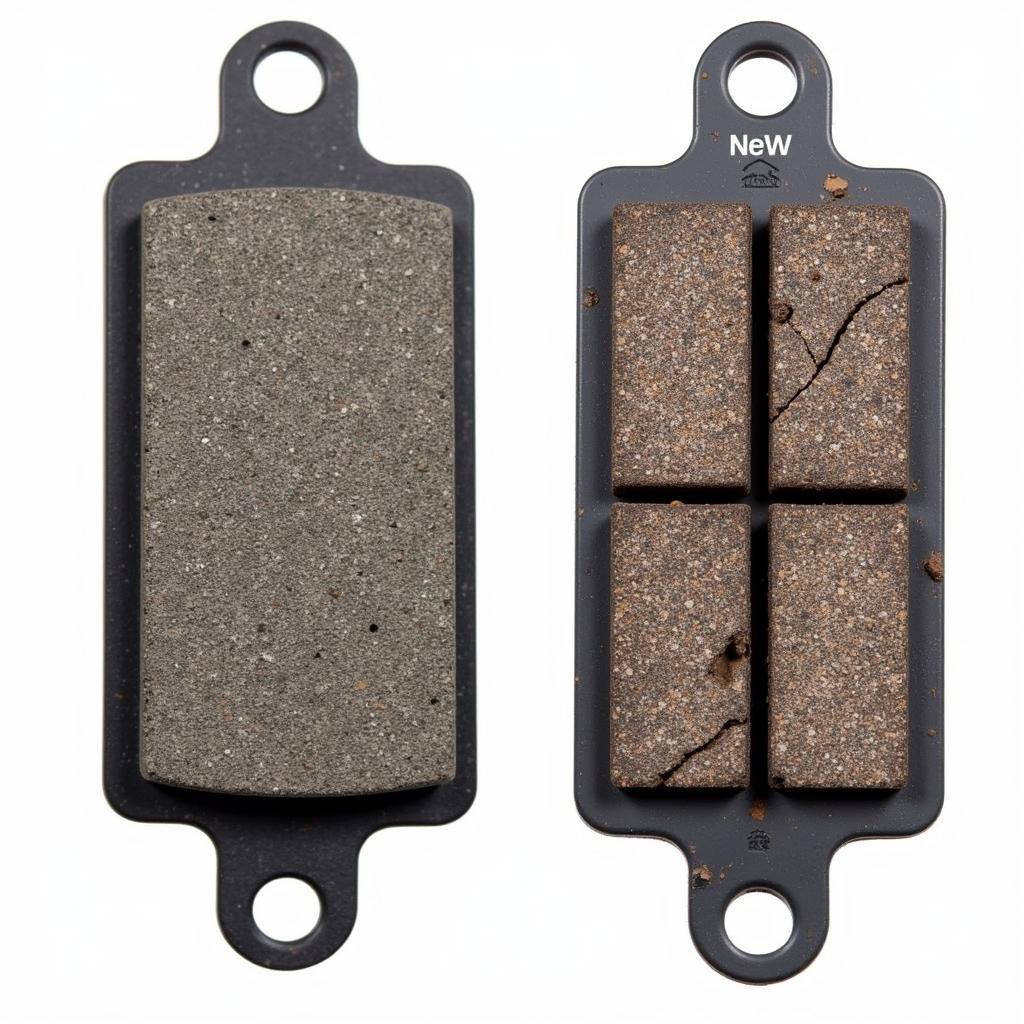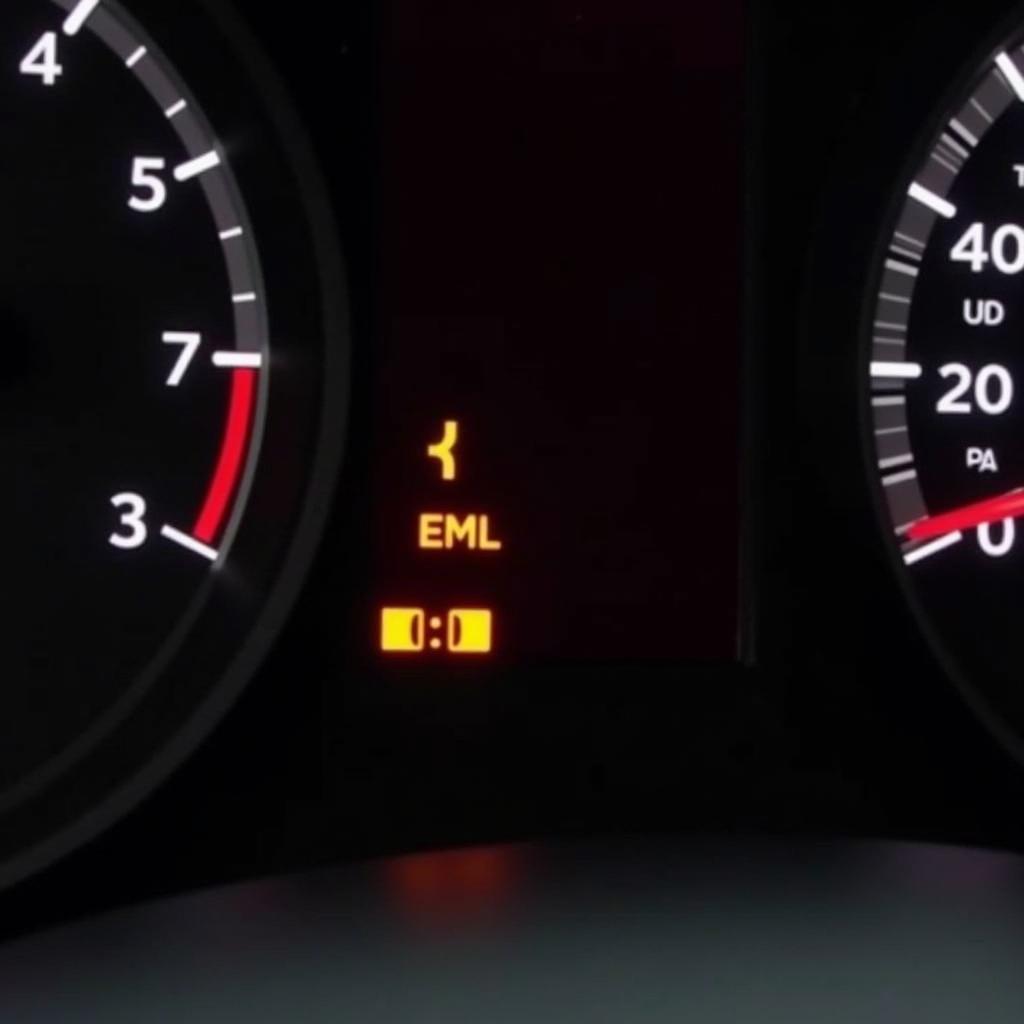Seeing a brake pad warning light illuminate on your BMW dashboard can be a nerve-wracking experience. Is it a minor issue or a sign of something seriously wrong? In many cases, the culprit is simply worn brake pads triggering the sensor. However, there are other potential causes, and understanding how to diagnose and address them is crucial for maintaining your BMW’s safety and performance.
This comprehensive guide will walk you through the common reasons behind a BMW brake pad warning light and provide clear instructions on how to turn it off.
Understanding Your BMW Brake Pad Warning Light
Your BMW is equipped with a sophisticated sensor system designed to monitor the condition of your brakes. When the brake pad warning light illuminates, it’s your car’s way of telling you it’s time to pay attention to your braking system.
There are two main types of brake pad warning lights in BMWs:
- Red Brake Warning Light: This light typically signals a serious issue that requires immediate attention. It could indicate a malfunction with your brake fluid levels, the Anti-lock Braking System (ABS), or a critical brake system failure.
- Yellow Brake Warning Light: This light usually means your brake pads are nearing the end of their lifespan and need replacing soon. It’s crucial to address this promptly to prevent further damage and ensure optimal braking performance.
Common Causes of a BMW Brake Pad Warning Light
While worn brake pads are the most frequent cause of the warning light, several other factors can trigger it:
- Worn Brake Pad Sensors: BMW brake pads have wear sensors that trigger the warning light when they make contact with the brake rotor due to pad wear.
- Low Brake Fluid: Insufficient brake fluid can also activate the warning light. It’s essential to check your brake fluid level and top it up if necessary.
- Faulty Brake Pad Sensor: In some cases, the brake pad sensor itself might be defective, leading to a false warning light.
- Issues with the ABS System: A problem within the ABS system, such as a malfunctioning wheel speed sensor, can also trigger the brake pad warning light.
- Brake Fluid Leak: A leak in your brake lines will cause a drop in brake fluid pressure and illuminate the warning light.
How to Turn Off the BMW Brake Pad Warning Light
The method for turning off the brake pad warning light in your BMW depends on the root cause. Here’s a step-by-step guide to help you troubleshoot and address the issue:
1. Inspect Your Brake Pads:
The first step is to visually inspect your brake pads. Look for signs of significant wear, such as thin pad material or grooves in the pads.
 Worn Brake Pads
Worn Brake Pads
2. Check Your Brake Fluid Level:
Locate the brake fluid reservoir under the hood of your BMW. The reservoir will have a “Min” and “Max” marking. If the fluid level is below the “Min” mark, carefully top it up with the recommended brake fluid type for your BMW model.
3. Resetting the Brake Pad Warning Light:
If you’ve replaced your brake pads or addressed the underlying issue, you’ll need to reset the warning light. You can reset the light using a specialized BMW diagnostic scanner or by following these steps (note that the exact procedure may vary slightly depending on your BMW model):
- Turn the ignition to the “on” position without starting the engine.
- Press and hold the brake pedal for approximately 30 seconds. You might hear a clicking sound, indicating the system is resetting.
- Release the brake pedal and check if the warning light has turned off.
4. Seek Professional Help:
If the brake pad warning light persists or you’re uncomfortable performing the above steps, it’s crucial to consult a qualified BMW mechanic or dealership. They have the expertise and tools to diagnose and repair any issues with your braking system.
Additional Tips for BMW Brake Pad Warning Light Issues
- Regular Brake Inspections: To avoid unexpected brake problems, schedule regular brake inspections as part of your BMW’s maintenance routine.
- Quality Brake Pads: When replacing your brake pads, always choose high-quality pads specifically designed for your BMW model. This ensures optimal braking performance and longevity.
- Address Warning Lights Promptly: Never ignore any warning light on your BMW dashboard, especially those related to your brakes. Promptly addressing these issues ensures your safety and can prevent costly repairs in the long run.
Frequently Asked Questions (FAQs)
Q: Can I drive my BMW with the brake pad warning light on?
A: It’s not recommended to drive with the brake pad warning light illuminated. Doing so can lead to further damage to your braking system and compromise your safety.
Q: How often should I replace my BMW brake pads?
A: The lifespan of brake pads varies depending on driving conditions and habits. However, it’s generally recommended to replace them every 30,000 to 70,000 miles.
Q: Can I reset the brake pad warning light myself?
A: While it’s possible to reset the light yourself in some BMW models, it’s advisable to consult your owner’s manual or seek professional help if you’re unsure about the procedure.
Q: What should I do if the brake pad warning light comes on after replacing the brake pads?
A: If the light persists after a brake pad replacement, there might be an issue with the installation, a faulty sensor, or another underlying problem. It’s essential to have a qualified mechanic inspect your braking system.
Conclusion
Understanding the nuances of your BMW’s brake pad warning light is crucial for safe and efficient driving. While worn brake pads are a common trigger, it’s vital to address any warning light promptly and thoroughly. By following the steps outlined in this guide, you can diagnose and potentially resolve the issue. However, remember that seeking professional help is always recommended for any persistent or complex brake problems. Maintaining your BMW’s braking system ensures your safety and helps you enjoy the ultimate driving experience.

